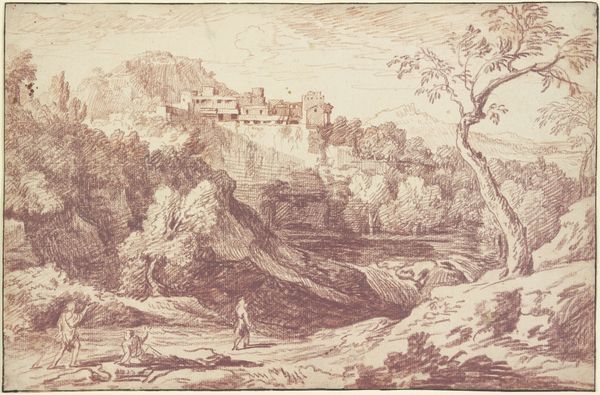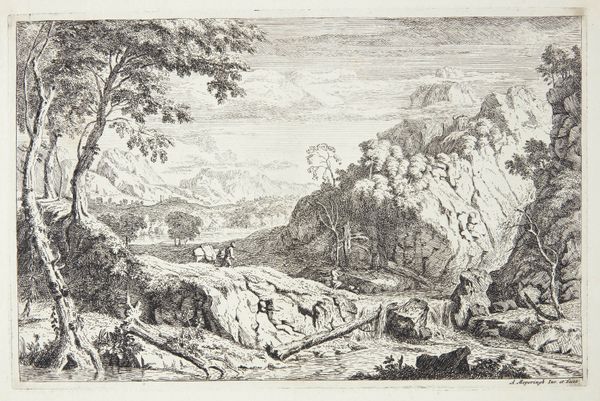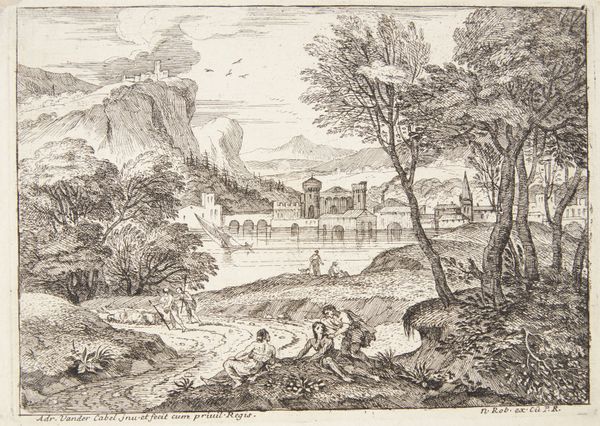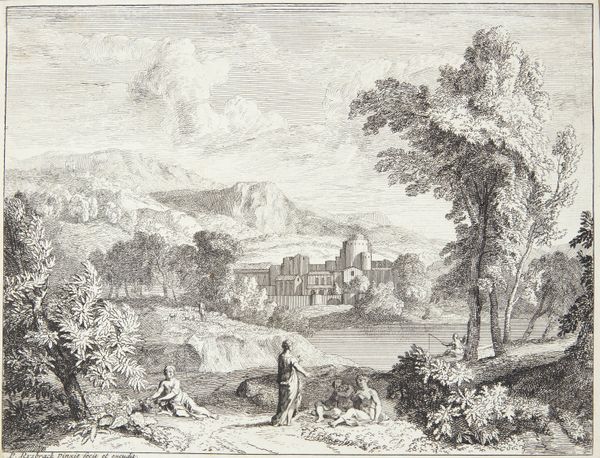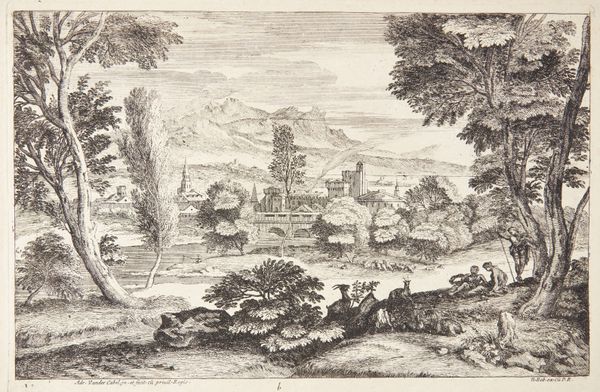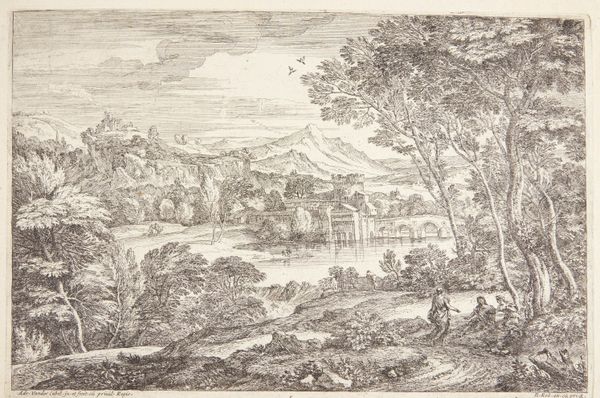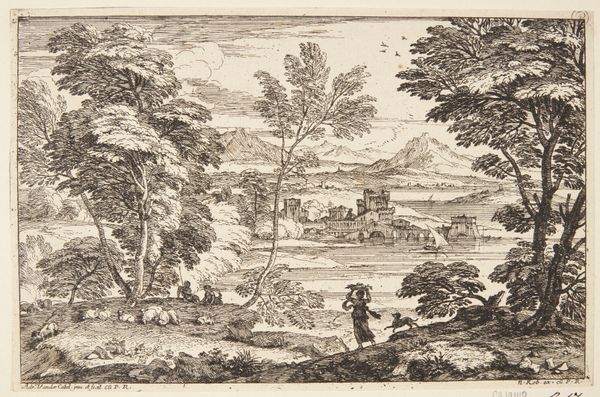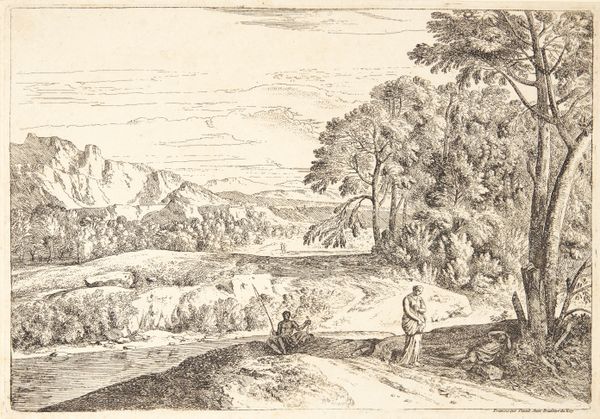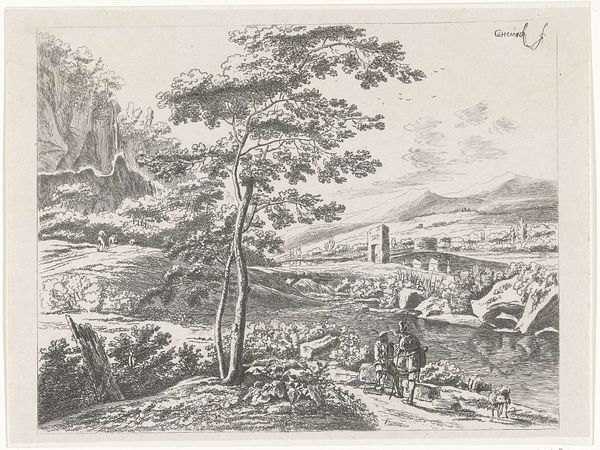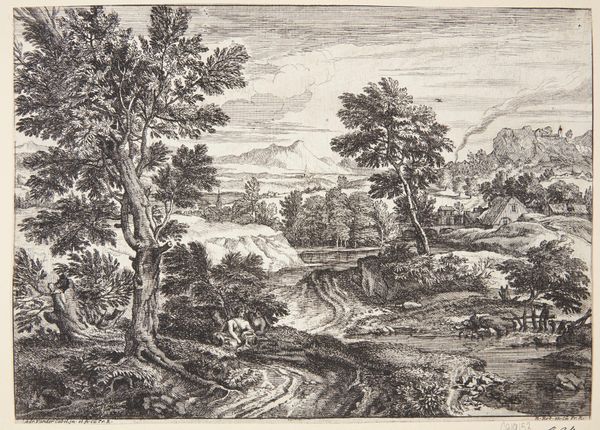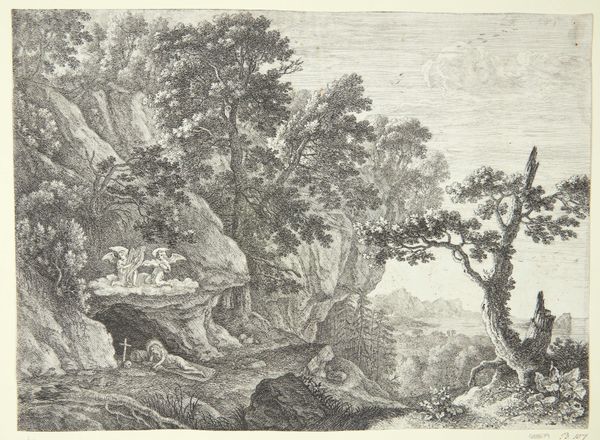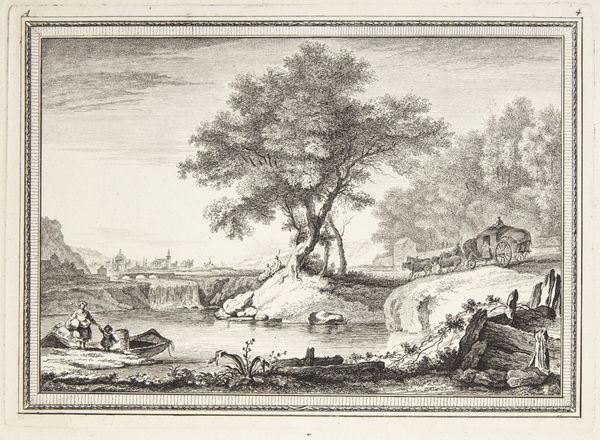
Landskab, i forgrunden tre vejfarende, der gør holdt 1630 - 1705
0:00
0:00
print, etching
#
baroque
#
pen drawing
# print
#
etching
#
landscape
#
figuration
#
line
Dimensions: 118 mm (height) x 167 mm (width) (bladmaal)
Curator: Here we have "Landscape with Three Travelers Halting in the Foreground," a print by Adriaen van der Kabel dating from between 1630 and 1705, currently housed in the SMK. Editor: My goodness, the linework practically vibrates! It feels breezy, almost windswept. Like I can hear the rustling leaves. Curator: Van der Kabel, of course, worked primarily as a painter, but this etching showcases the important role printmaking played in disseminating landscape imagery and, arguably, commodifying the picturesque. Note how the lines are not simply descriptive but actively build the image's texture. Editor: You know, looking closer, the figures seem so small, almost overwhelmed by the landscape. Makes you wonder about their journey, doesn't it? Or, more generally, about our place in a very complicated world. Curator: Precisely. The etching medium allowed for multiples, reaching a broader audience beyond the elite. This allowed the popularization of such vistas, transforming untouched nature into a cultural asset, reproducible for profit and consumed widely. Also observe the degree of work by other hands--a publisher signature is visible on the lower right. Editor: I always wonder about those collaborations, those anonymous hands shaping the art we see now. The way the dark lines almost swarm creates this incredible contrast—a sense of depth, even a kind of brooding grandeur. It reminds me of old storybooks, filled with mysteries lurking just beyond the trees. Curator: Indeed. And beyond the immediate impression, the work, and its production process, reveals a network of skilled labor contributing to its final form. Understanding how these prints circulated enriches our appreciation for the artistic and economic landscape of the time. Editor: It all points to our endless search for a connection to nature. I'm struck by how something made through reproducible processes still conveys a sense of the untamed and grand in natural environments, despite being a mere fraction of its actuality. Curator: Exactly. And it prompts a deep reflection about labor's contribution. Thanks to it, what was inaccessible to many, became both visually available and more available for acquisition in early modern European households.
Comments
No comments
Be the first to comment and join the conversation on the ultimate creative platform.
